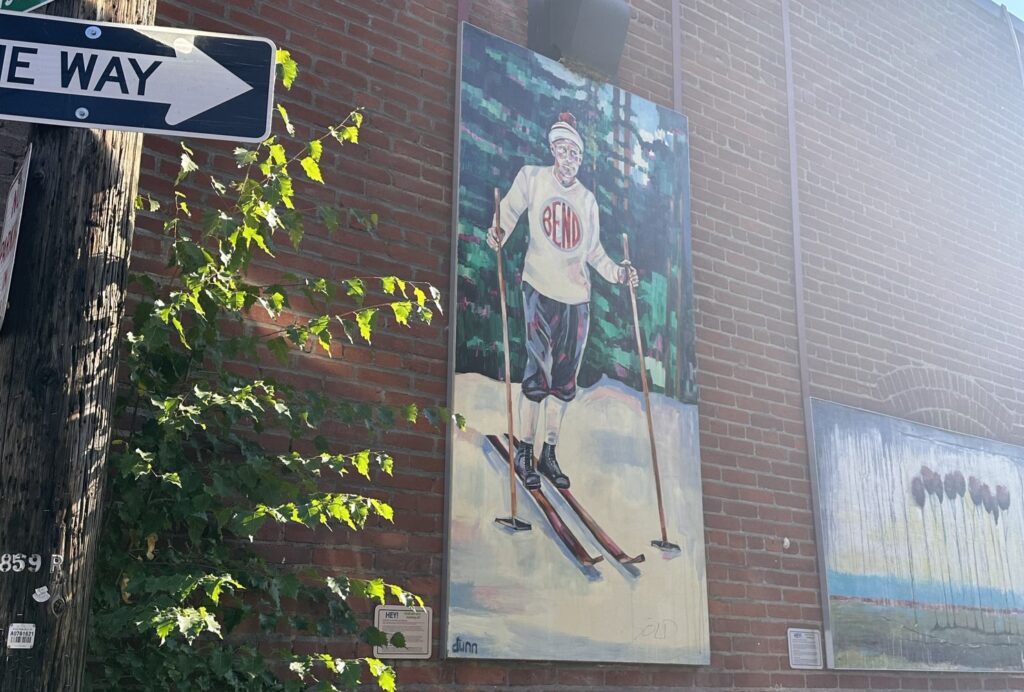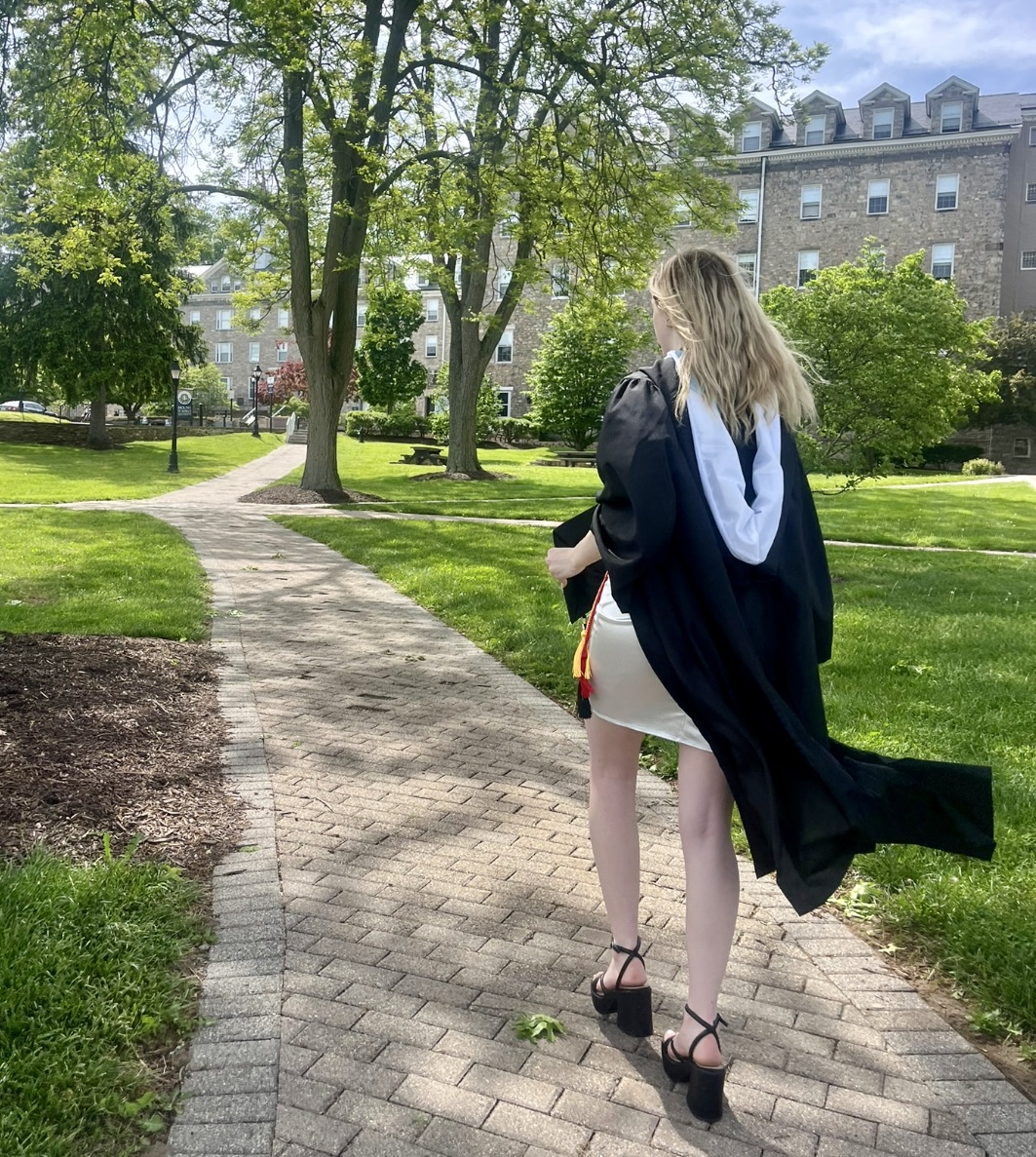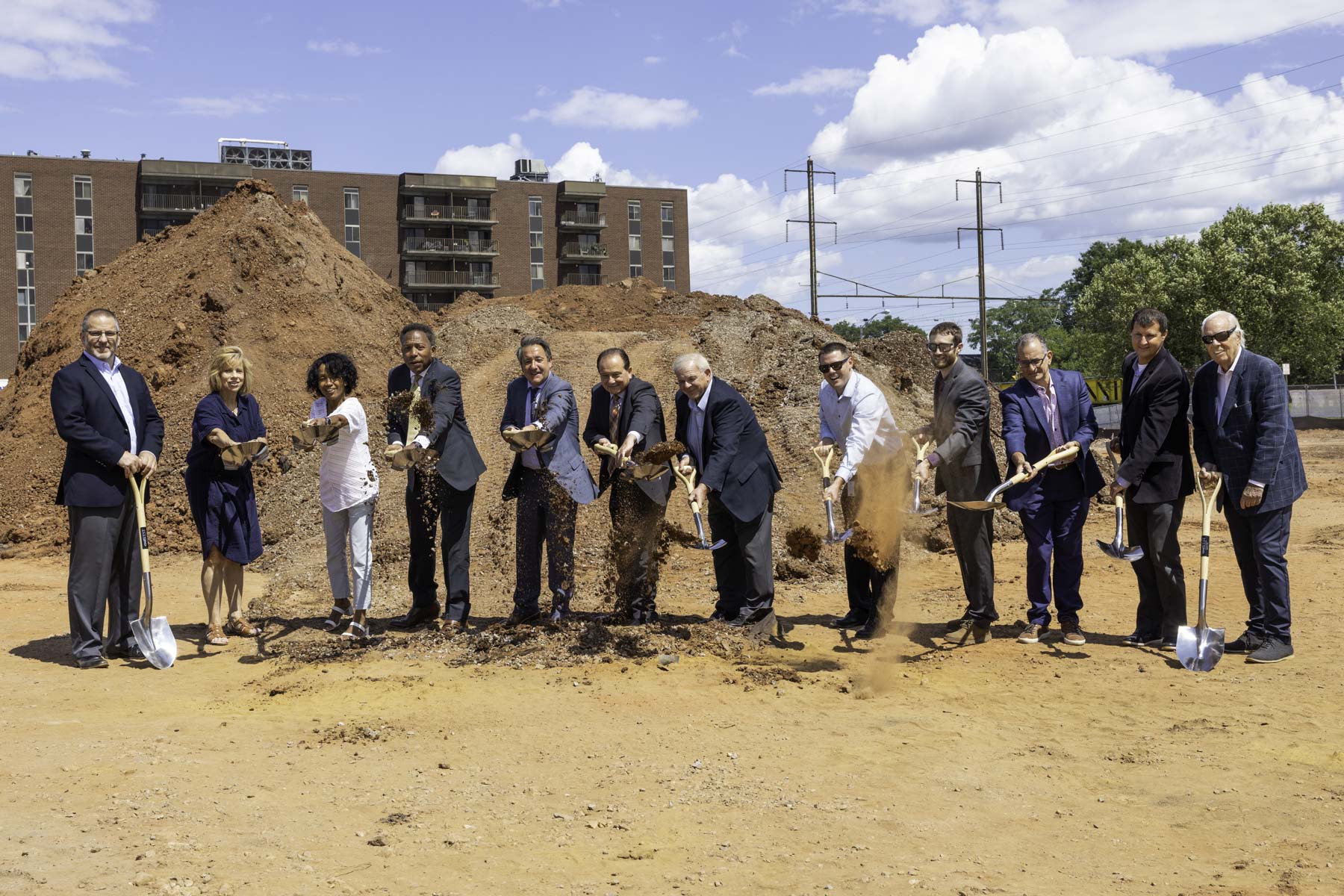(BEND, Ore.) – Last June, David Johnston and his wife decided to move from Bend, Oregon to Rancho Mirage, California in search of life in a sunnier climate. They were growing tired of the frigid Oregon winters and wanted a change of pace and Rancho Mirage was ranked as one of the hottest places in California. But a few months after the move, the Johnston’s grew homesick for Bend. They packed up their stuff and headed back north. When they arrived, they couldn’t find a place to live.
“It’s pretty crazy here,” said Johnston. “There was a saying a few years ago that, “Bend is a great place to live if you can afford to live here.”
During the pandemic, mandatory lockdowns meant that Americans had to work from home. The percentage of remote workers hit an all-time high of about 42 percent in 2020, and it still hasn’t returned to pre-pandemic levels. Roughly 26 percent of the American workforce is still telecommuting, according to online recruitment platform Zippia.
“It was a forced experiment and the experiment went well. And now, a lot of people are embracing it for the long run,” said Adam Ozimek, the chief economist at Economic Innovation Group. “Remote work has expanded people’s choices.”
Telecommuting allows people to live in places they normally couldn’t, often beautiful places in close proximity to nature. Almost five million people have relocated since 2020 because they are working remotely, according to a data report from Upwork, a freelance platform. The study also says that over nine million workers plan to move now that they are fully remote.
But this influx of remote workers into small, picturesque towns is pushing out locals who can’t keep pace with the rapidly rising rents. This phenomenon, known as “Zoom towns,” is on full display in Bend, the fastest-growing city in Oregon, and a mecca for outdoor enthusiasts.
A Booming Real Estate Bubble
In 2021, Bend had the highest percentage of people applying for remote jobs, according to data from Linkedin. And the facilities are there to support them. Locals who work online can gather at one of the city’s many co-working spaces. There is a Bend remote worker group on the website Meetup, designed to give local telecommuters a place to socialize and network.
With the Deschutes River flowing through downtown, a nearby ski resort and surrounding public lands, the city offers ample opportunity for workers to unwind once they’ve closed their laptops for the day.
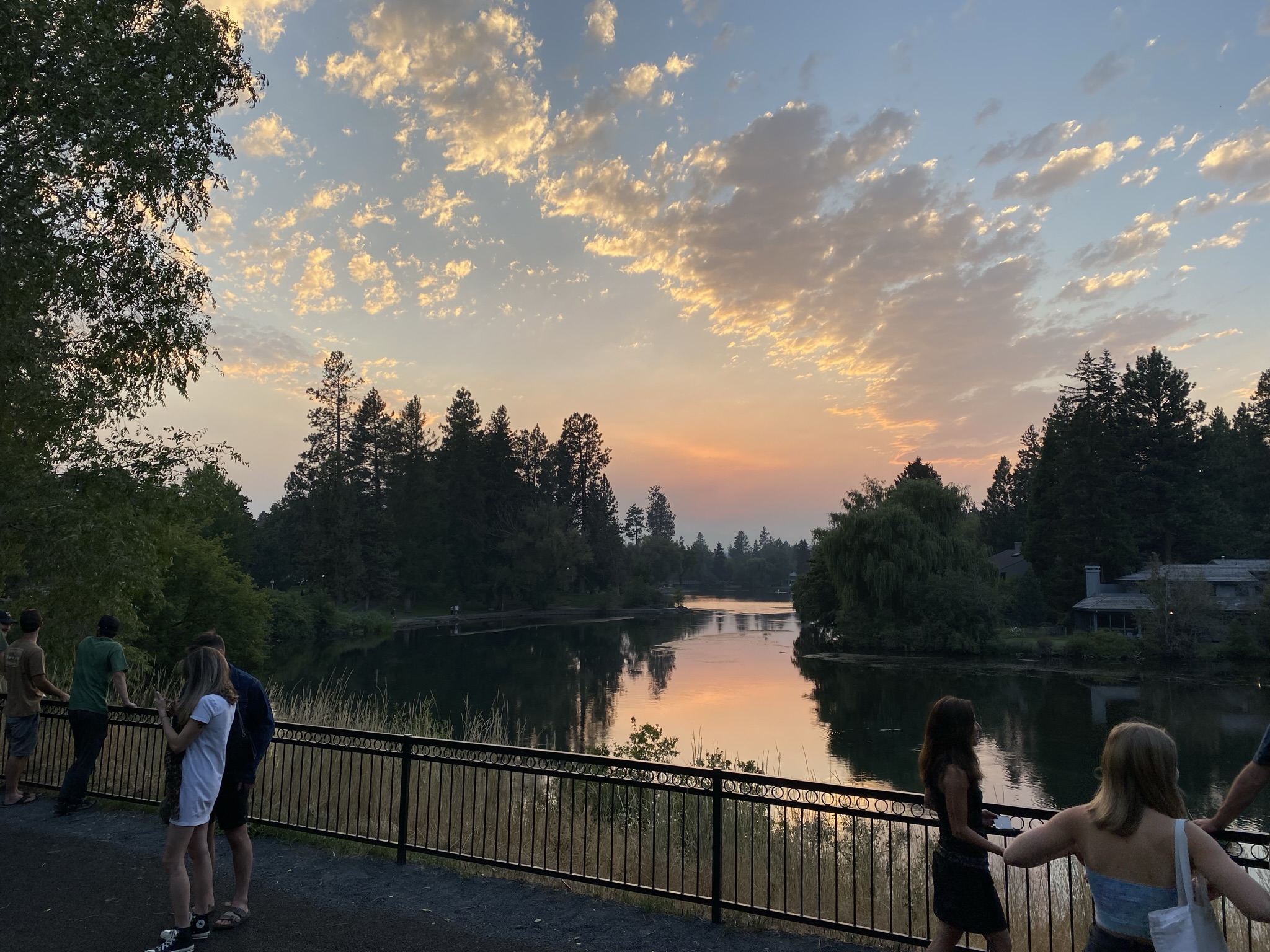
Residents gather around the Deschutes River at sunset in downtown Bend.
[Credit: Julianna LaFollette]
Carin Jackson, a local real estate agent, hosts a Youtube show where she shares advice with people looking to relocate to Bend. In the last year, she’s witnessed bidding wars where houses were sold between $100,000 to $200,000 over the asking price. Many homes sold within hours of hitting the market. “For a whole demographic of people here, it has gotten so expensive that they don’t even have the option to purchase anymore,” she said. “It’s just a renters market for them.”
For many, even renting isn’t an option. Instead, they’re moving into surrounding areas.
Damian Syrnyk, the senior planner for the city’s Growth Management Division said that while the city is attempting to keep up with housing demand, they’re constrained by local land regulations.
“There’s a combination of comprehensive plans and zoning that restricts further development outside of urban growth boundaries,” said Syrnyk.
Bend is encircled by an Urban Growth Boundary (UGB). Land within the UGB can be used to provide infrastructure for growth. Land outside of the boundary is designated for the protection of wildlife habitat, natural areas, forestry, agricultural use, rural living and recreation. There are “limits to which we can urbanize,” said Syrnyk.
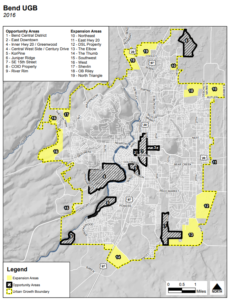
A graphic showing the UGB around the city. [Credit: City of Bend Growth Management]
A Troubling Trend
Bend isn’t the only western town suffering through the “Zoom town” phenomenon. Small, rural cities are experiencing unprecedented growth. This trend is happening in parts of Montana, such as Billings and Bozeman, where locals are struggling to find affordable homes. Likewise, housing prices in Boise, Idaho, increased by 30 percent in 2021.
Like Bend, many “Zoom towns” are constrained by land conservation easements that help provide places for recreation and prevent mountain sprawl. While these regulations preserve scenic views, they complicate the management of population growth. “If you see a really strong increase in population, and you can’t build new houses, that can lead to a decline in affordability for some people who were living there beforehand,” said Ozimek. The same boundaries and easements designed to protect views instead force developers to build up, instead of out.
“Those are good things to do for affordability for “Zoom towns” and “non-Zoom towns,” and they become particularly important when you are geographically constrained,” said Ozimek.
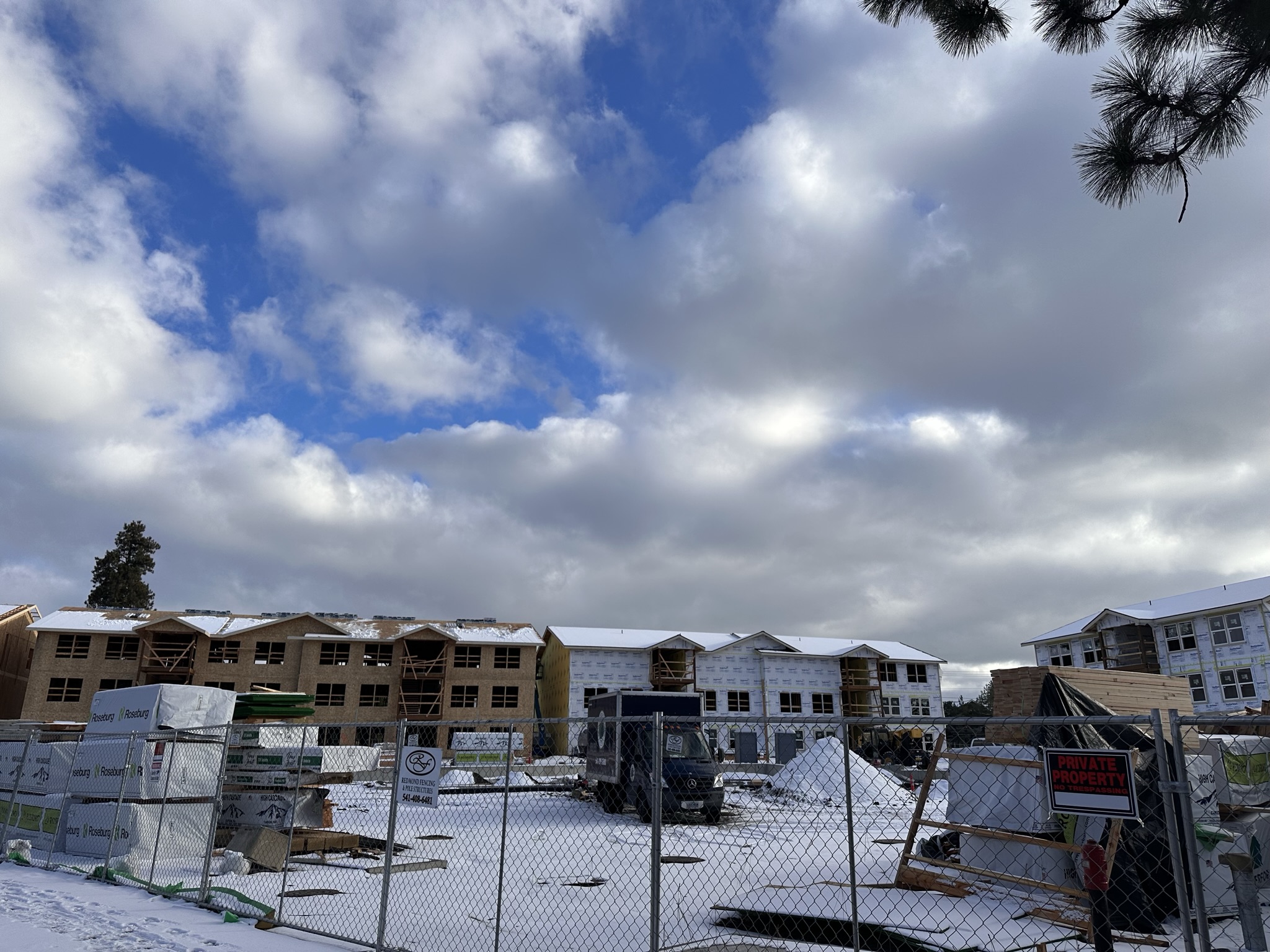
A new 48-unit apartment complex is under construction, providing more housing
to residents. [Credit: Julianna LaFollette]
The Johnstons have started looking at homes in the neighboring town of Prineville. It’s not home, but until officials find a way to accommodate both the long-time locals and new remote workers in their land-constrained town, it will have to do.
